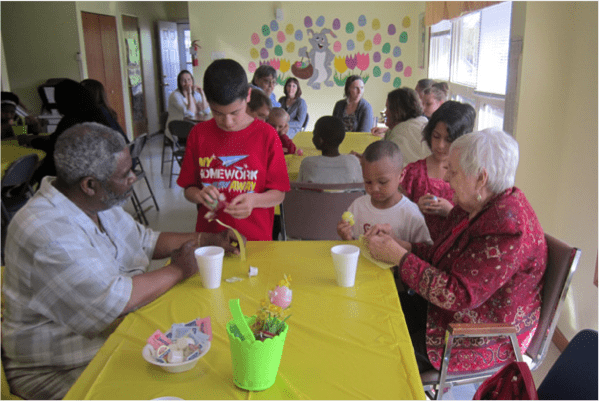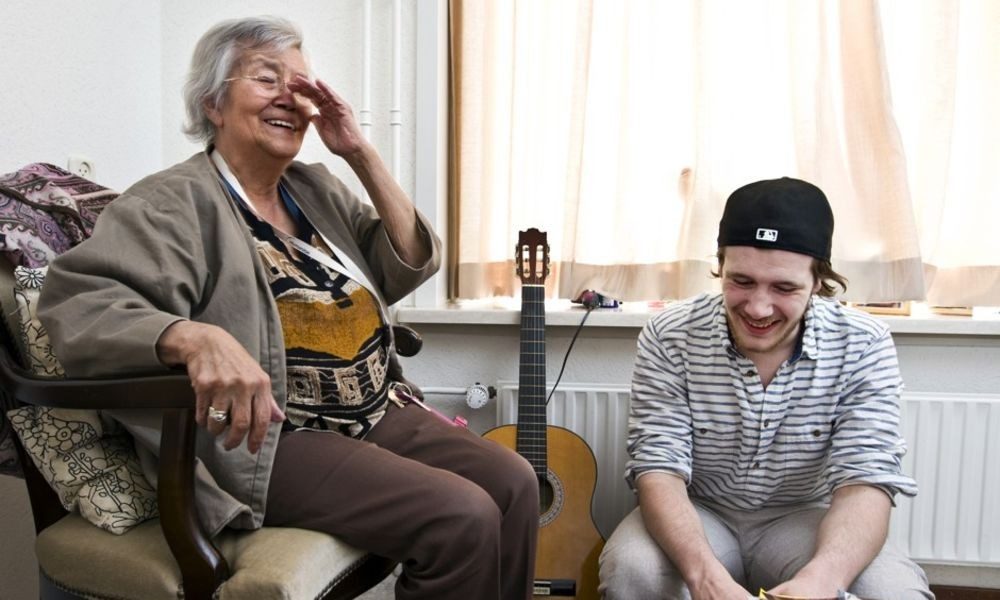Multigenerational housing aims to meet the needs of people of all ages and stages of life. But what does that mean? Attributes like safe, affordable, walkable, and diverse meet most people’s criteria. But what about diversity that goes beyond race or gender? Does a society that lacks generational diversity bring a wealth of benefits to seniors or an absence of opportunity for everyone involved?
The fastest growing community in America is the least diverse.
Surprisingly, we learned from the 2020 Census that a large retirement community named The Villages in central Florida is the fastest-growing metropolitan area in the U.S. This predominantly white, politically conservative stronghold appealed to thousands of new retirees looking to flee the snow.
Residents were attracted to warm Florida winters and pastel-colored homes surrounded by golf courses and pickle ball courts in a radically changing America. The Villages are not alone in being neither diverse nor multigenerational. Thousands of these nondiverse age-restricted “Sun City” type communities can be found throughout the U.S. It’s an excellent option for the hundreds of thousands of seniors that call 55+ communities home.
Pioneering the 55+ movement was Del Webb of Sun City fame. The developer recognized the opportunity to provide an antidote to the challenges of aging. Rather than spending their “golden years” in colder parts of the country, older adults were convinced to pull up roots and move to communities of like-minded people and lives of leisure. A radio jingle back in the day promoting this new model of planned unit development sang out: “Don’t let retirement get you down! Be happy in Sun City; it’s a paradise town.” But one size doesn’t fit all.
A new trend in senior living values inclusion over exclusion.
While there are plenty of 55+ communities around the country, designed specially to meet seniors’ physical and social needs, intergenerational cities are just coming into their own. Currently, there are 73 million Baby Boomers born between 1946 and 1964. According to the Census Bureau, about 10,000 members of this group turn 65 every day, “and by 2030, all boomers will be at least age 65.”

Boomers seem destined to transform the business of aging. For a growing number of older adults, living with neighbors of all ages and from all walks of life makes more sense. These seniors believe that intergenerational connections are not just valuable for them but their communities and country.
Quite a few developers have noticed and are designing communities that consciously house a mix of older and younger people for the growing number of seniors who see multigenerational housing as a healthier alternative to less diverse models. Many older boomers consider retirement a time to learn, work, serve, belong, and transform.
“The aging of America’s population is one of the most important trends of the 21st century, with tremendous implications for our health, our economy, and our quality of life. We believe we can advance the important national conversation about aging and help our communities take tangible steps to prepare for these huge demographic changes.”
Caroline Roan, President of Pfizer Foundation
Why should we strive to create more intergenerational options?
Baby Boomers will be the largest generation of older people in our country’s history. Making our communities more age-friendly and inclusive may have a broader appeal than before. Older people today strive to remain active and contribute to their communities. And many younger people see benefits in a more age-integrated neighborhood too. Here’s why:
- Older adults offer a wealth of experience and skills which provide a unique source of social capital.
- Many seniors want to live healthy, active, independent, engaged lives while aging in place, with less costly needs.
- The more intergenerational communities we build, the more services will be available to assist those who choose to age in their own home. Public opinion surveys from AARP and others show that more than eight out of 10 older people want to “age in place” or at least stay in their communities for as long as possible.
- Walkable streets, accessible housing, better community health, and more volunteerism benefit people of all ages.
“The societies that adapt to this changing demographic can reap a sizeable ‘longevity dividend,’ and will have a competitive advantage over those that do not.”
Dr. Margaret Chan, Director-General of The World Health Organization
It takes planning, zoning, and infrastructure improvements to develop age-friendly communities. Whole neighborhoods can be transformed simply by organizing our aging services effectively. Age-friendly community action can include input from senior residents for local planning. Social services such as meal delivery, adult day programs, and caregiver support can be designed from the start.
Intergenerational communities not only thrive, but they’re also good business.

Known as Florida’s “friendliest hometown,” in the words of real-estate agents, the Villages features only those 55-and older. Disney is planning to create a similar age-restricted community in Florida. This mastermind for creating a “fantasyland” for kids might be eyeing a lifestyle development for older adults as its next frontier.
Eco Village in Ithaca, N.Y., offers a multigenerational housing platform for engaged action and education for those committed to sustainable living. Agrihood in Santa Clara, Calif., plans a working farm with mixed-use housing. The hope is to enrich the lives of older residents through intergenerational gardening activities and access to healthy organic foods and produce. The mini-farm will feature “a community room, produce stand and learning shed.”
SAGE, an organization dedicated to supporting L.G.B.T. elders, has recently partnered to develop two affordable apartment buildings in New York City. The first, Stonewall House, is a modern 17-story brick tower with large windows designed by the collective Marvel. Completed in 2019, it is on the property of the Ingersoll Houses, a public housing complex in Brooklyn.
Think warmer weather, lower taxes, and no age restrictions.
The Census and the Village’s success makes it clear: There is a need for new living options for older Americans. For those who want something other than age-restricted, nondiverse neighborhoods, several fast-growing university-oriented retirement communities and co-housing arrangements are already in progress.
Right on the campus of Lasell University in Newton, Mass, there’s Lasell Village, where older residents can study with students in their teens and 20s. At Arizona State University, the new Mirabella community promotes a retirement experience unlike any other by offering physical, emotional, spiritual, social, and vocational wellness programs.
“A growing number of adults like me realize that living next to neighbors of all stages in life makes sense. The connection between our generations is valuable for my sense of community.”
Janet Gibbons, resident of Lasell Village, Newton, Massachusetts
Intergenerational living and learning arrangements are proven to foster positive attitudes and a sense of well-being. College towns across America provide advantages for residents of all ages. The mind and body benefits are clear. From larger cities from Boston to Austin, Texas, to smaller places like Ann Arbor, Michigan, and Boulder, Colorado, multigenerational housing shows that young people and retirees can successfully share spaces and decades of knowledge.



We are interested in living in a multigenerational community. We’ve been full time living in our motor coach the last three years, traveling. We’d like to buy into a community with multi generations. Buying into a 55 plus community, frankly scares us. We love families.